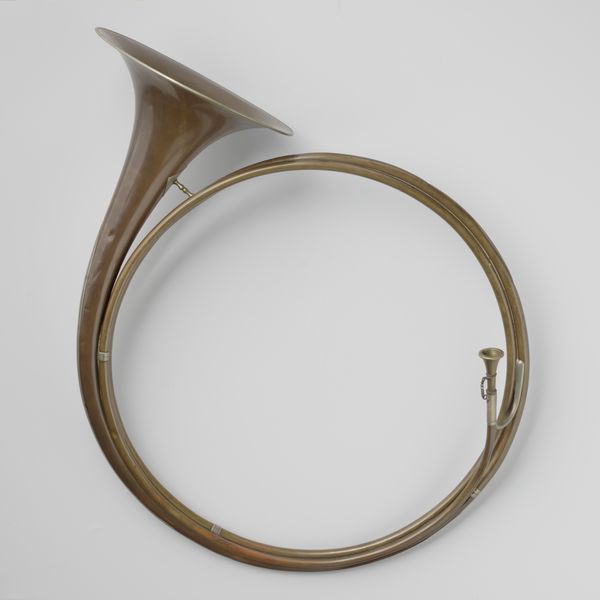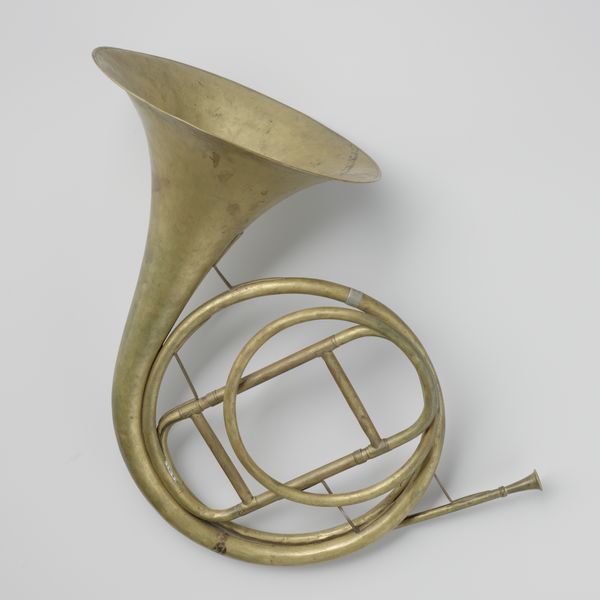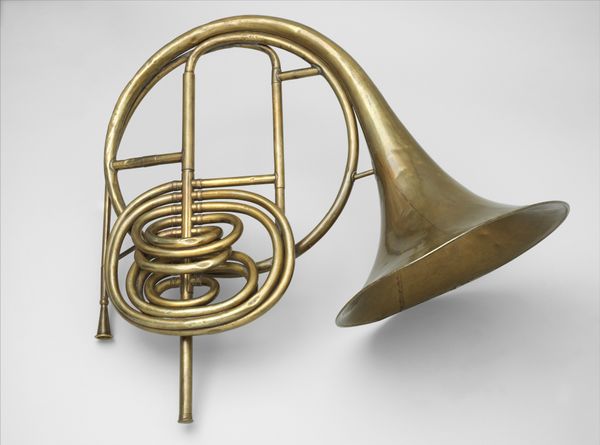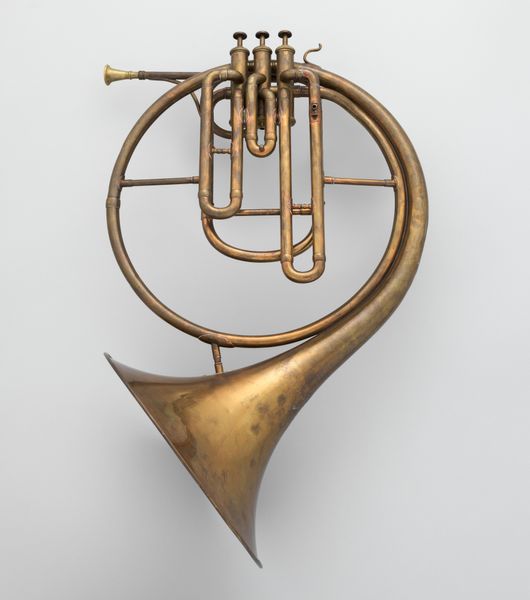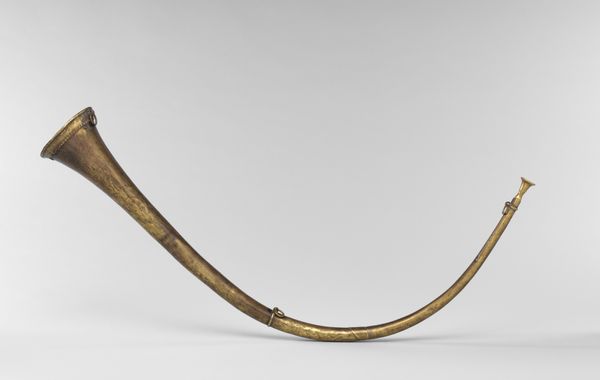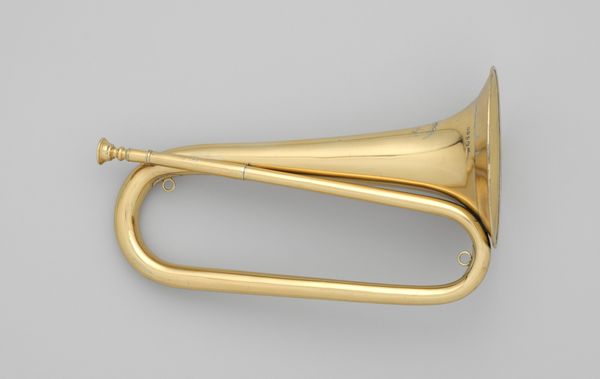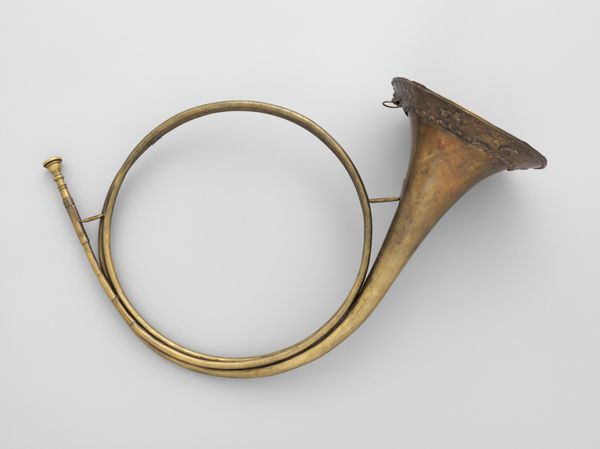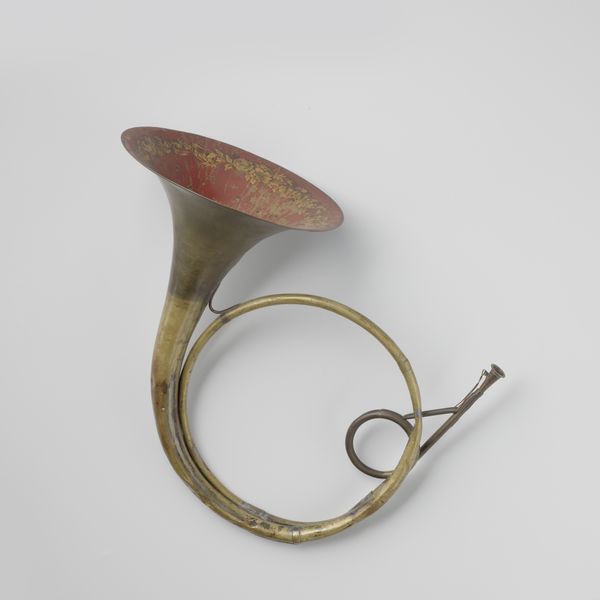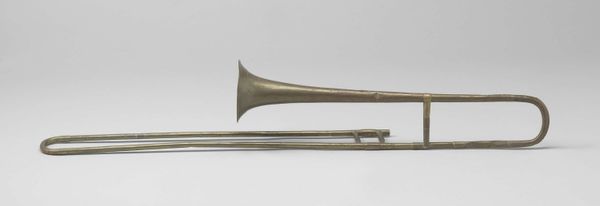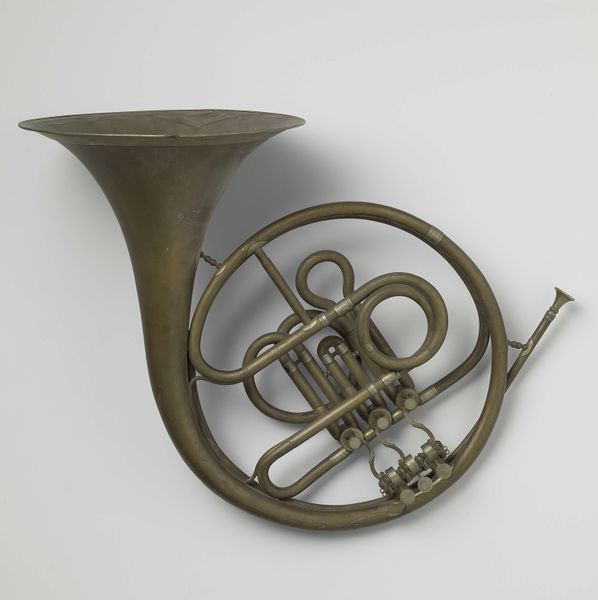
Trompe de chasse "Dauphine" 1695 - 1705
0:00
0:00
brass, sculpture
#
brass
#
baroque
#
form
#
geometric
#
sculpture
#
musical-instrument
Dimensions: Small bell (28.5cm diameter) and a large three and a half turns body (inside diameter 50.0cm)
Copyright: Public Domain
Editor: So, here we have a "Trompe de chasse 'Dauphine'," a hunting horn crafted sometime between 1695 and 1705, likely in Paris. It’s this gleaming, circular form made of brass. I’m struck by its simplicity; the perfect circle almost feels modern. What do you see in this piece, particularly beyond just its function as an instrument? Curator: Its circularity absolutely dominates, doesn’t it? Think of the ring as a potent, primordial symbol – wholeness, eternity, a link to cyclical time and rituals. This instrument wouldn't have just signaled a successful hunt. It's tied to courtly life, status, and perhaps even acted as a tool of communication that was easily understandable, and with different sounds tied to emotions and activities. Do you see how its elegant design elevated hunting to almost a theatrical display? Editor: I hadn't thought about that performance aspect! The 'Dauphine' suggests royal connections. Did the imagery surrounding hunting have particular significance for the French aristocracy? Curator: Precisely. Hunting wasn't merely a sport; it was deeply intertwined with power. Imagine the hunt as a controlled space reflecting the king's mastery over his realm. The horn, therefore, becomes more than an instrument; it symbolizes dominance and the well-ordered state. This gleaming brass form then turns into a marker of identity and place within a cultural structure. What do you think this kind of object communicates to us now, beyond its original context? Editor: It speaks to the enduring power of symbols, even when their original context is somewhat lost to time. I mean, it looks lovely! It transcends its original use and just presents as this gorgeous art object. Thanks, that’s a different perspective for me to consider. Curator: Indeed, these echoes from the past allow us to consider what cultural objects mean in the moment and how symbols, no matter the function, change over time.
Comments
No comments
Be the first to comment and join the conversation on the ultimate creative platform.

